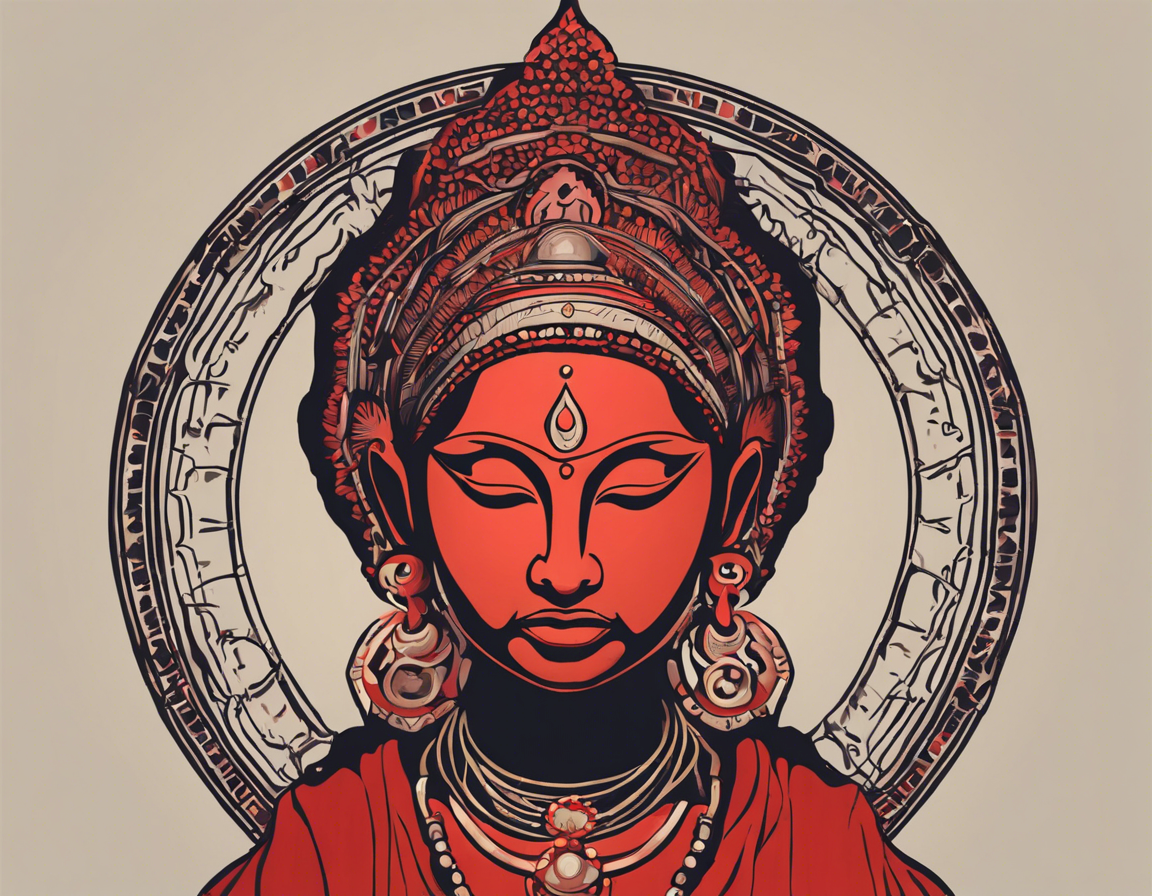Nestled atop the Nilachal Hill in Guwahati, Assam, India, lies the revered Kamakhya Devi Temple, a sacred site shrouded in mystique, folklore, and ancient traditions. This temple, dedicated to the Goddess Kamakhya, is an epitome of power, fertility, and mysticism, attracting pilgrims and tourists alike from far and wide. Let us delve deep into the enigmatic world of the Kamakhya Devi Temple and unravel its mysteries.
History and Legend
The history of the Kamakhya Devi Temple dates back centuries, with roots embedded in both Hindu mythology and local folklore. The temple finds mention in the ancient texts like the Kalika Purana and the Yogini Tantra. Legend has it that the temple marks the spot where the Goddess Sati’s yoni (vulva) fell after Lord Shiva danced with her corpse in a fit of rage. This event, known as ‘the Sati peethas’, symbolizes femininity, fertility, and the eternal cycle of creation and destruction. The temple hence celebrates the divine feminine energy in all its glory.
Architecture and Design
The temple’s architecture is a beautiful blend of Nagara and Kalinga styles, with a unique beehive-shaped dome crowning the sanctum sanctorum. The structure is adorned with intricate carvings, sculptures, and colorful paintings depicting various Hindu deities and mythological tales. The main shrine, known as the Garbhagriha, houses the yoni-shaped rock, which is revered as the divine representation of Goddess Kamakhya.
Rituals and Festivals
The Kamakhya Devi Temple is a hub of spiritual activities and festivals throughout the year. The most famous festival celebrated here is the Ambubachi Mela, held annually during the monsoon season. During this time, it is believed that the Goddess Kamakhya goes through her annual menstrual cycle, and the temple remains closed for three days. Thousands of devotees gather to seek blessings during this time, and on the fourth day, the temple reopens amidst much fanfare.
Tantric Practices
One of the unique aspects of the Kamakhya Devi Temple is its association with Tantric practices. The temple is considered an important center for Tantric worship, where rituals involving secret mantras, yantras, and vashikaran techniques are performed to harness divine energies. Tantric priests, known as ‘Brahma Kapalikas’, conduct these rituals with utmost secrecy and devotion, drawing seekers from far and wide.
Mystical Beliefs and Offerings
Devotees visiting the Kamakhya Devi Temple often come with specific desires and offerings. It is believed that worshipping at this temple can fulfill wishes related to fertility, love, prosperity, and protection from evil forces. The temple priests perform rituals on behalf of the devotees, which may include animal sacrifices, a practice deeply rooted in Tantric traditions. However, in recent times, alternative offerings like fruits, flowers, and sweets are also accepted.
Significance and Spiritual Importance
The Kamakhya Devi Temple holds immense significance in the spiritual landscape of India. It is not just a place of worship but a living embodiment of divine energy that transcends human understanding. The temple attracts seekers of knowledge, solace, and enlightenment, offering a sacred space for introspection, meditation, and spiritual growth.
Preservation and Conservation Efforts
In recent years, the Kamakhya Devi Temple has seen a surge in visitors, leading to concerns about conservation and preservation. Efforts are being made to maintain the sanctity and heritage of the temple while ensuring sustainable tourism practices. The authorities are working towards striking a balance between tradition and modernity, keeping the essence of the temple intact for generations to come.
FAQs (Frequently Asked Questions)
-
What is the best time to visit the Kamakhya Devi Temple?
The temple can be visited throughout the year, but the Ambubachi Mela in June-July is an auspicious time to seek blessings. -
Are there any restrictions for visiting the temple?
The temple follows certain customs and rituals, so it is advisable to dress modestly and respect the religious sentiments of the place. -
Is photography allowed inside the temple premises?
Photography is generally not allowed inside the main sanctum sanctorum of the temple, but you can capture the external beauty of the temple. -
How to reach the Kamakhya Devi Temple?
The temple is situated in Guwahati, Assam, and is easily accessible by road from the city center. The nearest railway station is Guwahati Junction. -
What are the nearby attractions to visit along with the temple?
Visitors can explore attractions like Umananda Temple, Assam State Museum, and Navagraha Temple in the vicinity of Kamakhya Devi Temple. -
Can non-Hindus visit the Kamakhya Devi Temple?
The temple is open to people of all faiths, but it is essential to observe the religious customs and practices while visiting. -
Is it safe for solo travelers, especially women, to visit the temple?
The temple premises are generally safe, but it is advisable for solo travelers, especially women, to take necessary precautions and avoid secluded areas. -
What are the accommodation options near the Kamakhya Devi Temple?
There are various budget and luxury hotels available in Guwahati city, which provide comfortable accommodation for visitors. -
Are there any guided tours available for the temple visit?
Yes, there are local guides and tour operators who offer guided tours of the Kamakhya Devi Temple, providing insights into its history and significance. -
Can I participate in the rituals and ceremonies at the temple?
While the main rituals are conducted by the temple priests, visitors can participate in the aarti ceremonies and seek blessings from the Goddess.
In conclusion, the Kamakhya Devi Temple stands as a bastion of spirituality, mysticism, and cultural heritage, inviting devotees and seekers to experience the divine presence of Goddess Kamakhya. It is a place where ancient traditions merge with modern aspirations, creating a tapestry of faith and devotion that continues to enthrall visitors from around the world.
